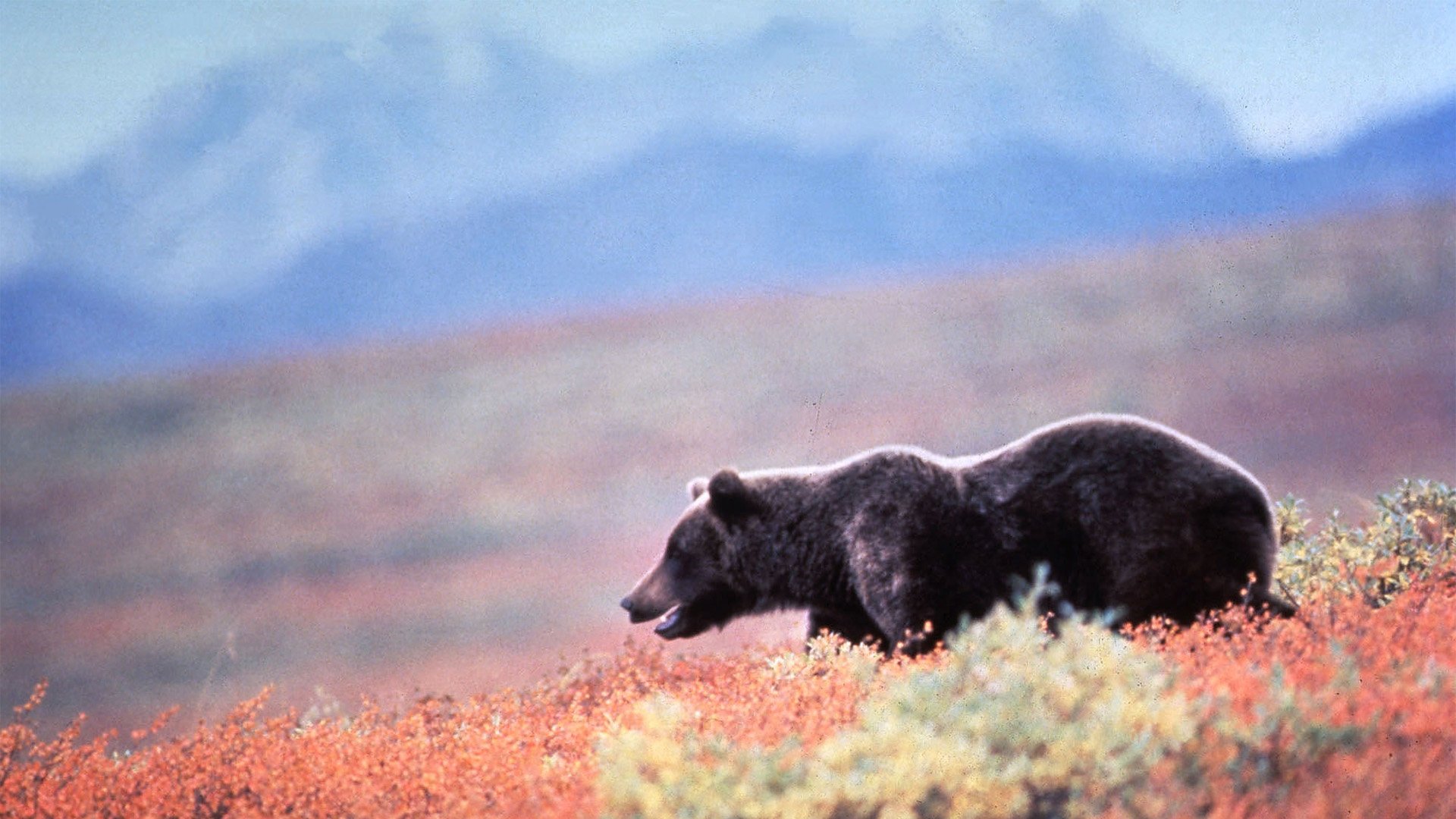
With an acute sense of smell, an Alaskan brown bear can detect prey from a mile away. At speeds up to 35 mph, a bear can run across three football fields in less than 20 seconds. Getty Images photo.
After Typhoon Merbok came the grizzlies.
Socked in by fog and drizzle in the wake of a superstorm, a four-man hunting party clung to the side of a mountain as the brown bears, the apex predators deep inside Alaska, began closing in.
They’d counted up to 11 of the grizzlies consuming all their food and water. And then on Tuesday, Sept. 20, a 62-year-old hunter used his Garmin InReach to message a loved one that he was suffering chest pains.
That triggered a mayday alert to US Coast Guard watchstanders in Juneau, roughly 922 nautical miles southeast of their encampment. A flight surgeon told them they had to get the hunter help within four hours, but the typhoon had grounded bush pilots across Alaska’s western shores.
“That was a big concern, that he was in medical jeopardy,” US Coast Guard MH-60T Jayhawk helicopter pilot Capt. Nathan Coulter told Coffee or Die Magazine.
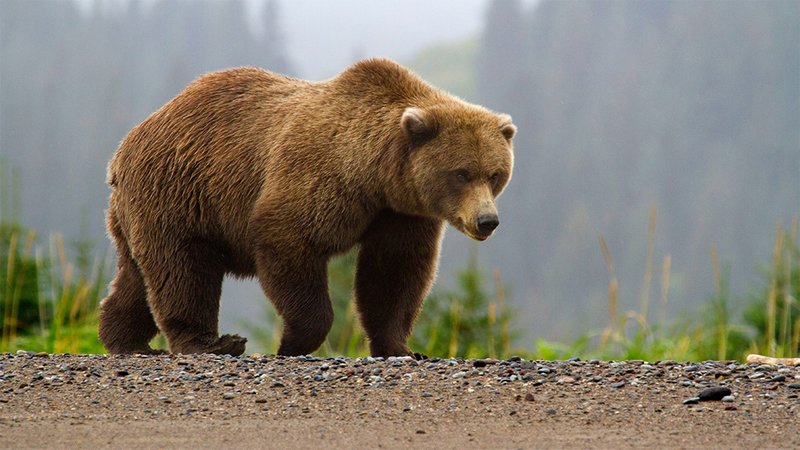
With an acute sense of smell, an Alaskan brown bear can detect prey from a mile away. At speeds up to 35 mph, a bear can run across three football fields in less than 20 seconds. National Park Service photo by Kevyn Jalone.
Forward-deployed to Kotzebue, Coulter’s crew were the only rescuers who had a chance of fetching the man, before his heart gave out or the bears came in.
They launched in the black of night, chopping through the remnants of a typhoon Coulter called the “worst Alaska had seen in a decade.”
He and his co-pilot, Chris Guernsey, and their crew — Avionics Electrical Technician 2nd Class Dan Belt and an elite rescue swimmer, Aviation Survival Technician 3rd Class Kimble Petersen — used night vision goggles and the helicopter’s infrared camera to pick out river valleys and mountain peaks as guideposts to the remote camp.
But when the Jayhawk arrived, the crew realized the hunters were high up the ridge, which was swaddled in clouds.
“We ended up having to basically hover up the side of the mountain in the clouds for maybe 800 to 1,000 feet, just all the while trying to stay as close as we could to the mountain so we could see it,” Coulter said.
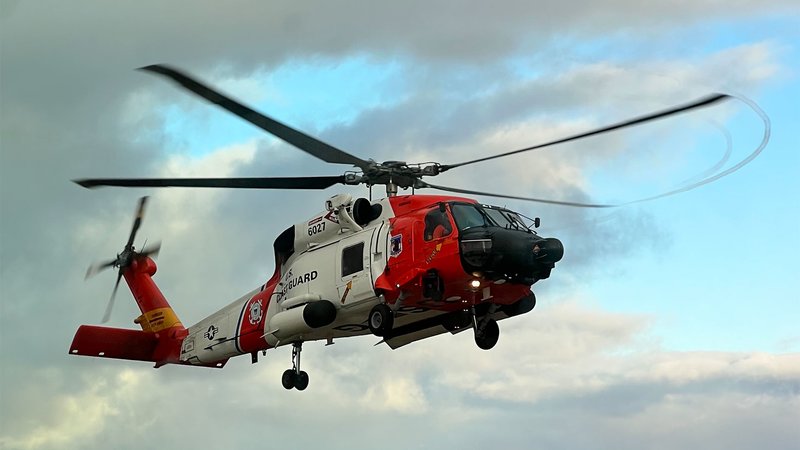
An Airstation Kodiak MH-60T Jayhawk is shown operating out of the seasonal Arctic Forward Operating Location in Kotzebue, Alaska. US Coast Guard photo.
Their night optics also showed bears circling the camp. Coulter told the hunters they needed to “energize whatever lights they had” to guide the aircrew in for the rescue.
“There was a small light, and so that gave us an idea about where we were going,” he said.
The pilots gingerly maneuvered the Jayhawk a couple of stories above the rocks, about a football field away from the camp, using its rotor wash to shoo away a bear sow and her two cubs.
“The bears are at the top of the food chain so they don't really respond to, you know, much else,” Coulter told Coffee or Die. “If you're bigger and louder, then I think that's your best hope.”
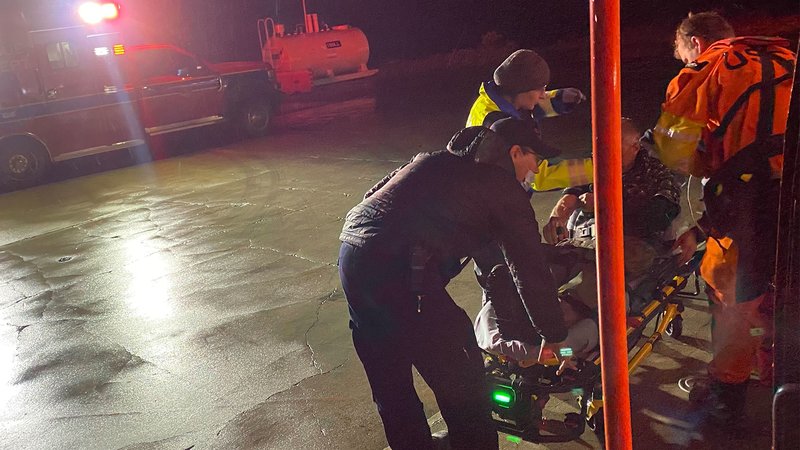
US Coast Guard Aviation Survival Technician 3rd Class Kimble Petersen joins medical personnel in Kotzebue, Alaska, to help a 62-year-old man who was evacuated from a hunting camp on Sept. 20, 2022. US Coast Guard photo.
Coulter said warning shots don’t really spook hungry bears, and it’s not always legal to blast away at them anyway.
Alaska law allows people to shoot at grizzlies in defense of life and property, but illegal hunting can spark expensive fines and other legal woes.
“We didn’t want our crew in danger of the bears coming around while they were trying to help load people up to the helicopter,” Coulter said.
The rescue swimmer Petersen and a civilian paramedic from Kotzebue hopped out of the helicopter and helped haul the ailing hunter into the Jayhawk.
He arrived at the forward operating strip in stable condition, but Coulter told Coffee or Die the patient was transported in the morning to Anchorage for a higher level of care.
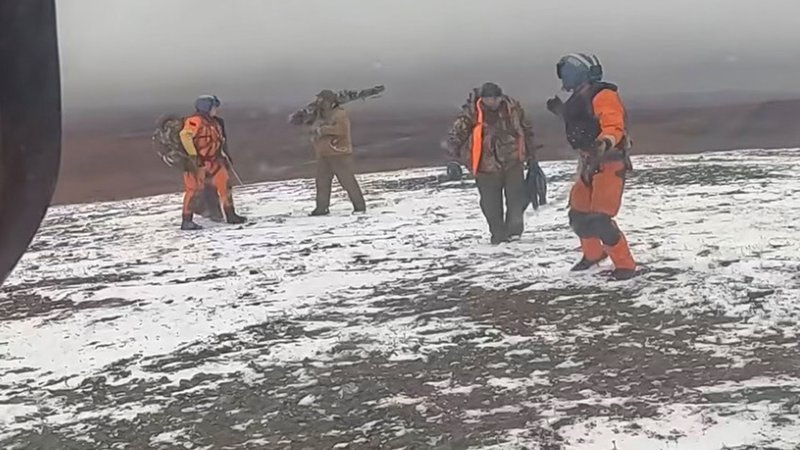
US Coast Guard Avionics Electrical Technician 2nd Class Dan Belt and Aviation Survival Technician 3rd Class Kimble Petersen lead three hunters into a rescue helicopter on Sept. 21, 2022, roughly 100 nautical miles north of Kotzebue, Alaska. US Coast Guard photo.
Around the same time, the hunters left behind on the mountain began urging the Coasties to come back.
Coulter said the trio had “real concerns with the bears that were coming more emboldened on their tents.”
“They were out of food and supplies, and the weather was supposed to get worse,” Coulter said. “They were on the verge of being in a tight spot.”
A break in the weather allowed the Jayhawk to fly a straight path to them. The hunters were lifted to safety within an hour.
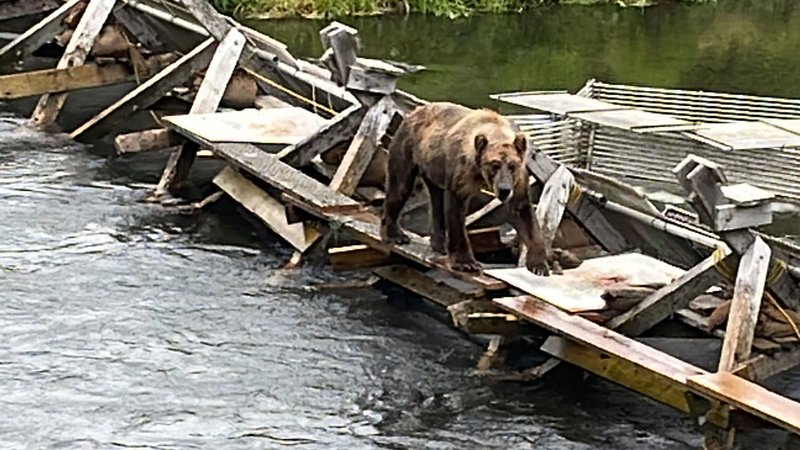
A Kodiak brown bear wanders Saltery Cove on Kodiak Island, Alaska, July 15, 2022. Photo by Noelle Wiehe/Coffee or Die Magazine.
Coulter’s crew is slated to rotate back to Coast Guard Base Kodiak on Thursday.
Teams there have been conducting overflights of typhoon-ravaged communities, with some villages slapped by a 12-foot storm surge that left widespread flooding.
“It was a combination of a few things that really created some significant problems for a couple of communities, specifically the direction of the wind and the high tide and the storm surge,” Coulter said.
Read Next: Feds: Catamaran Skipper Shoots at Coast Guard Crew Rescuing Him

Noelle is a former staff writer for Coffee or Die through a fellowship from Military Veterans in Journalism. She has a bachelor’s degree in journalism and interned with the US Army Cadet Command. Noelle also worked as a civilian journalist covering several units, including the 75th Ranger Regiment on Fort Benning, before she joined the military as a public affairs specialist.
BRCC and Bad Moon Print Press team up for an exclusive, limited-edition T-shirt design!
BRCC partners with Team Room Design for an exclusive T-shirt release!
Thirty Seconds Out has partnered with BRCC for an exclusive shirt design invoking the God of Winter.
Lucas O'Hara of Grizzly Forge has teamed up with BRCC for a badass, exclusive Shirt Club T-shirt design featuring his most popular knife and tiomahawk.
Coffee or Die sits down with one of the graphic designers behind Black Rifle Coffee's signature look and vibe.
Biden will award the Medal of Honor to a Vietnam War Army helicopter pilot who risked his life to save a reconnaissance team from almost certain death.
Ever wonder how much Jack Mandaville would f*ck sh*t up if he went back in time? The American Revolution didn't even see him coming.
A nearly 200-year-old West Point time capsule that at first appeared to yield little more than dust contains hidden treasure, the US Military Academy said.












